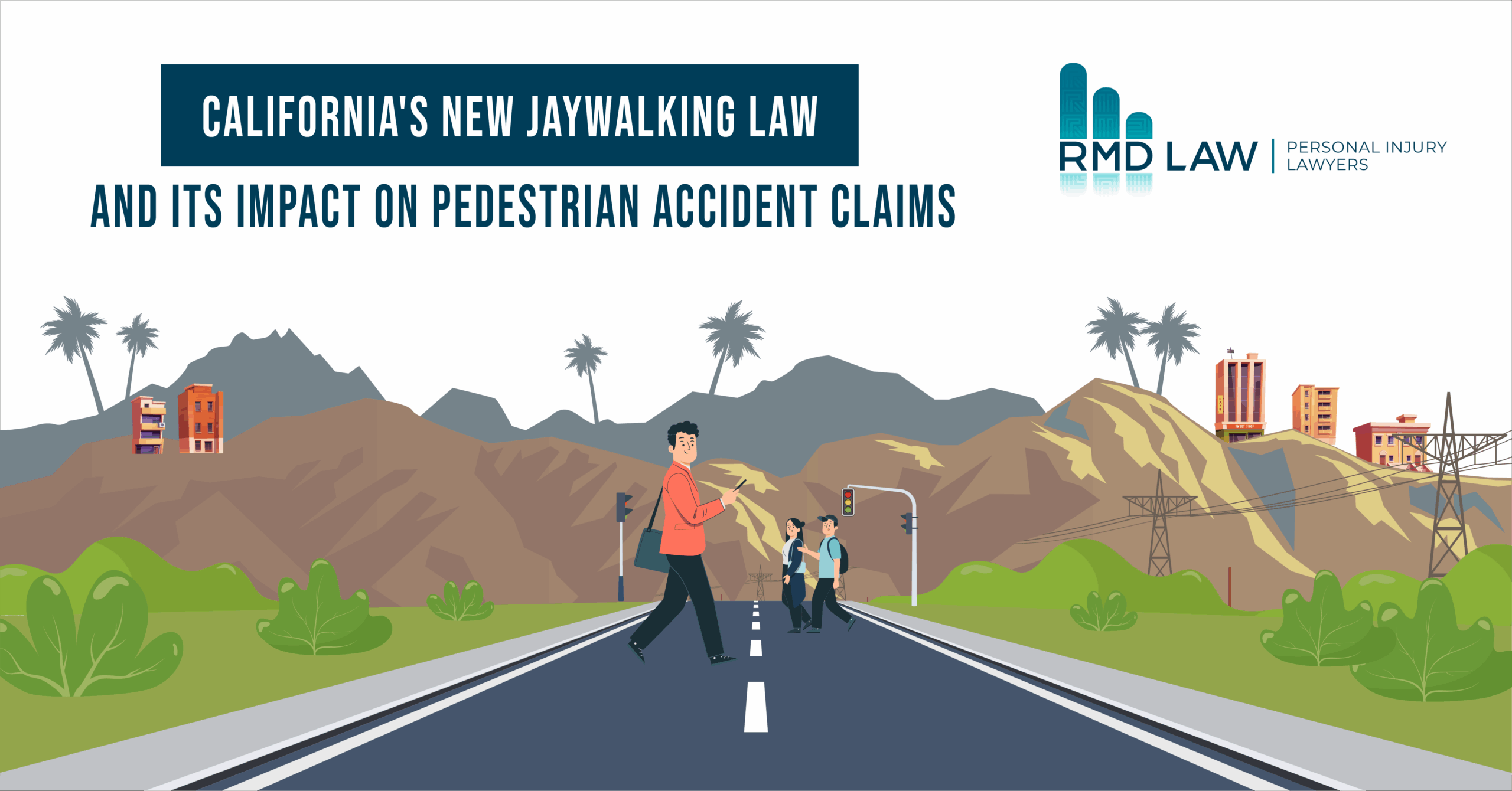
Have you ever crossed the street mid-block because it just made more sense—and then worried you’d get a ticket? If you live in California, you’re not alone. For years, jaywalking has been one of those everyday “violations” that most people don’t think twice about—until they see flashing lights. But now, there’s good news for pedestrians: California has officially hit the brakes on overly strict jaywalking laws.
Thanks to the Freedom to Walk Act (AB 2147), which went into effect in 2023, safe jaywalking is no longer a crime. That means, if you’re crossing the street carefully and there’s no traffic, you shouldn’t be cited just because you’re not in a crosswalk. While this change may seem small, it carries big implications for pedestrian rights, public safety, and accident claims across the state.
This major change to California law has given pedestrians more leeway in where and how they cross the street. The law now in effect across California relaxes jaywalking rules statewide. This relatively new law was intended to decriminalize safe street crossing and reduce inequitable jaywalking enforcement.
But what does it really mean for pedestrians, and is jaywalking legal in California under this Act? More importantly, how could these changes impact who is at fault in a pedestrian accident under California’s comparative negligence rules?
In this post, we’ll break down the Freedom to Walk Act, debunk some common misconceptions, and explain how California’s comparative negligence system works when determining liability for pedestrian accidents. We’ll also explain how a pedestrian accident lawyer can help strengthen your case if you ever find yourself involved in a pedestrian accident.
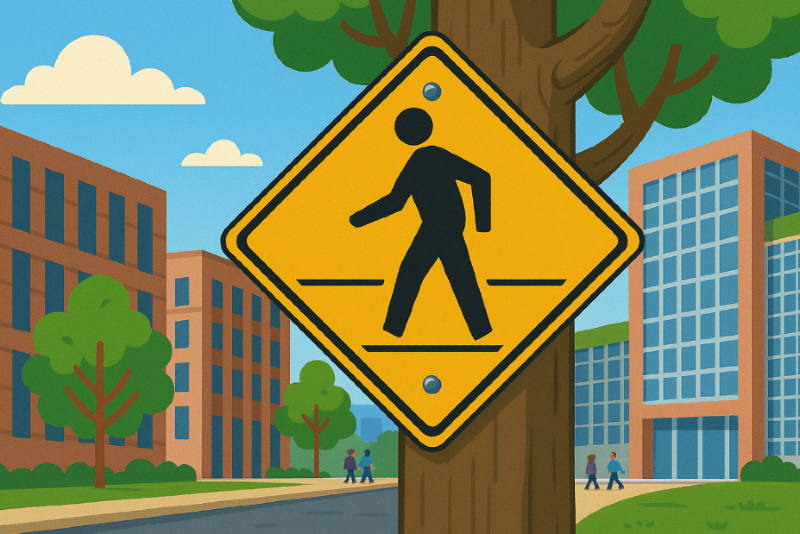
What Is the 2023 Freedom to Walk Act (AB 2147)?
California’s Freedom to Walk Act (Assembly Bill 2147) is a law that changes how jaywalking is enforced. Prior to 2023, jaywalking – crossing a street outside of a crosswalk or against a traffic signal – was illegal and could result in hefty fines (often around $197–$250 in places like Los Angeles) for pedestrians. Police could stop you for stepping into the road outside of a crosswalk even if no cars were coming.
AB 2147, known as the Freedom to Walk Act, went into effect on January 1, 2023.
This law allows pedestrians in California to legally cross streets outside of designated crosswalks, provided it’s safe to do so.
Police officers are prohibited from stopping or ticketing pedestrians for jaywalking unless there is an immediate danger of a collision.
The reform addresses concerns about unfair enforcement of jaywalking laws in certain communities and aims to improve safety.
If a pedestrian is hit by a vehicle while crossing safely, outside of a crosswalk, the driver may face serious legal consequences and financial liabilities.
How does this work in practice? Imagine you’re in downtown Los Angeles and want to cross a street that doesn’t have a crosswalk nearby. Under the old law, you could get a ticket for that. Under the Freedom to Walk Act, you can cross legally if no traffic is coming – essentially, safe jaywalking is no longer a ticketable offense in California. The same goes for a quiet neighborhood street in San Diego or a busy block in San Francisco: you have the freedom to cross outside of a crosswalk without fear of a jaywalking ticket, as long as you use due care.
Is Jaywalking Still Illegal in California?
With the law in effect, many people ask: “Is jaywalking legal in California now?” The answer is nuanced. While crossing outside a crosswalk remains technically unlawful, police can’t ticket pedestrians unless the crossing is dangerous. This effectively decriminalizes most jaywalking instances. Safe jaywalking is legal, but dangerous jaywalking remains illegal.
Under the Freedom to Walk Act, officers can’t stop or fine people for jaywalking unless there’s an immediate collision risk. So, cautiously crossing an empty street is within the law. However, pedestrians must still yield to cars outside crosswalks and can be ticketed for dangerous jaywalking, like running in front of a moving car.
In pedestrian collisions, liability depends on the incident’s circumstances, including whether the pedestrian jaywalked dangerously. California law permits safe jaywalking, but it’s not an absolute right. Stepping into traffic unsafely can still lead to citations. The key is ensuring crossings are safe and sensible, as pedestrian safety remains paramount. However, a pedestrian accident lawyer would be able to tell you exactly how these laws apply to your personal injury claim.
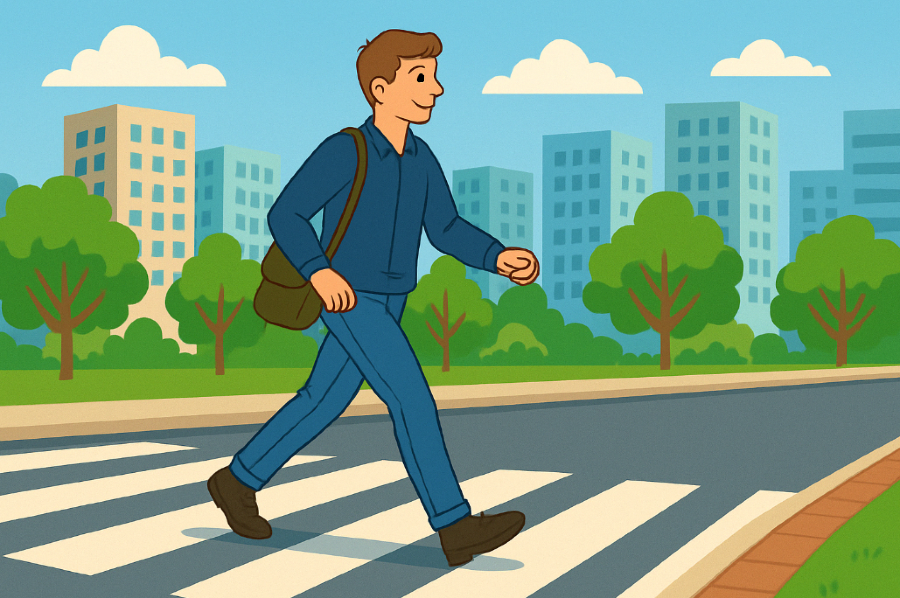
Debunking Common Misconceptions
Traffic collisions involving pedestrians are a significant concern, often resulting in severe injuries or fatalities. These incidents highlight the importance of understanding the legal implications and safety measures associated with jaywalking.
Whenever a new law like this comes around, misconceptions are bound to arise. Let’s clear up a few common myths about California’s jaywalking law:
Myth
“Jaywalking is now completely legal anywhere, anytime.”
Reality
Not exactly. The Freedom to Walk Act means you won’t get a ticket for jaywalking as long as you cross safely when traffic permits. It does NOT legalize reckless crossing. Pedestrians can still be cited for unsafe jaywalking (nearly a $200 fine) if they create a hazard, and they must yield to vehicles when not in a crosswalk. In other words, you can’t just stroll into high-speed traffic and expect to be protected by this law.
Myth
“If I wasn’t ticketed for jaywalking, I can’t be blamed if a car hits me.”
Reality
Even if the police don’t cite you, fault in an accident is a separate issue. Not getting a ticket doesn’t automatically make you free of responsibility if a collision occurs. Pedestrians still have a duty to be careful, and drivers still must be careful around pedestrians. In an accident, California’s comparative negligence rules will apply – meaning both the driver and the pedestrian can share fault based on the circumstances.
Myth
“If I was jaywalking when I got hit, I can’t recover any compensation for my injuries.”
Reality
Wrong. In California, being partly at fault (for example, jaywalking) does NOT prevent you from recovering damages in a personal injury claim. Thanks to pure comparative negligence, you can still file a pedestrian accident claim and recover compensation even if you were jaywalking – your award may just be reduced by your percentage of fault. So, a pedestrian accident victim shouldn’t automatically assume they have no case if they were outside a crosswalk. You may still have a right to recovery, depending on the situation. However, always consult a pedestrian accident lawyer before making an decisions about your case.

Introduction to Pedestrian Safety
Pedestrian safety is a critical concern in today’s society, with thousands of pedestrians injured or killed in accidents involving motor vehicles every year. Pedestrian accidents can result in serious injuries, including traumatic brain injuries, broken bones, and even death. Understanding the causes of pedestrian accidents and taking steps to prevent them is essential for ensuring the safety of everyone on the road.
Experienced pedestrian accident lawyers play a crucial role in helping victims of pedestrian accidents recover compensation for their injuries and other related expenses. These legal professionals have the expertise to navigate the complexities of these cases, ensuring that pedestrian accident victims receive the fair compensation they deserve. Whether it’s dealing with medical bills, lost income, or pain and suffering, pedestrian accident attorneys are dedicated to advocating for the rights of injured pedestrians.
Causes of Pedestrian Accidents
Pedestrian accidents can occur due to various factors, including distracted driving, poor visibility, and failure to follow traffic laws. Distracted driving, such as texting or talking on the phone while driving, is a leading cause of pedestrian accidents. When drivers take their eyes off the road, even for a few seconds, they can easily miss seeing a pedestrian crossing the street.
Other common causes of pedestrian accidents include drunk driving, speeding, and failure to yield to pedestrians. Drunk drivers have impaired judgment and reaction times, making them more likely to strike pedestrians. Speeding reduces a driver’s ability to stop quickly, increasing the likelihood of a collision. Additionally, some drivers fail to yield the right-of-way to pedestrians at crosswalks or intersections, leading to dangerous situations.
Pedestrians can also be at fault in some cases. For example, failing to follow traffic signals or crossing streets without using a crosswalk can increase the risk of an accident. Understanding the causes of pedestrian accidents is crucial in preventing them and ensuring that pedestrians and drivers share the road safely.
Pedestrians can also be at fault in some cases. For example, failing to follow traffic signals or crossing streets without using a crosswalk can increase the risk of an accident. Understanding the causes of pedestrian accidents is crucial in preventing them and ensuring that pedestrians and drivers share the road safely.
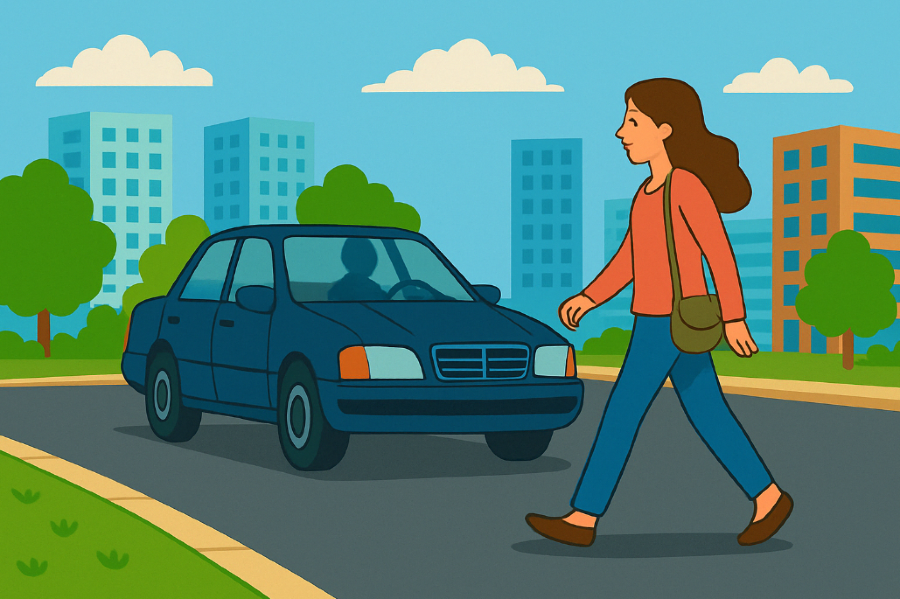
Understanding Car Accidents and Pedestrian Safety
Car accidents involving pedestrians can result in severe injuries and fatalities. Pedestrian fatalities occur when a pedestrian is struck by a motor vehicle, and the pedestrian dies as a result of the accident. These tragic incidents highlight the importance of understanding pedestrian safety and the role of traffic laws in preventing accidents.
Pedestrian collisions can occur at intersections, crosswalks, or other locations where pedestrians and motor vehicles share the road. It is essential to understand the traffic laws and regulations in your area to ensure that you are taking the necessary steps to stay safe as a pedestrian. For example, always use marked crosswalks when available and obey traffic signals to minimize the risk of an accident.
Experienced pedestrian accident attorneys can help victims of pedestrian accidents navigate the complex process of recovering compensation for their injuries. These legal professionals understand the nuances of pedestrian accident cases and can assist in dealing with insurance companies, proving liability, and securing fair compensation for medical expenses, lost wages, and other damages.
How Comparative Negligence Affects Pedestrian Accident Claims
California follows a system of pure comparative negligence, also known as comparative fault, which is pivotal in determining liability and compensation in pedestrian accidents. This doctrine allows each party in an accident to be assigned a percentage of fault, with damages divided accordingly. Even if an injured pedestrian shares some blame, they can still recover damages, though reduced by their fault percentage.
For instance, if you were unsafely jaywalking in San Francisco and hit by a car, incurring $100,000 in losses, and the driver was speeding, both parties might be found equally at fault. Under comparative negligence, your compensation would be reduced by your share of the fault, making you eligible to receive $50,000.
In cases where the driver is impaired, their negligence can significantly impact their liability. Establishing the driver’s fault is crucial for seeking compensation, even if the pedestrian is partially at fault.
The Freedom to Walk Act strengthens a pedestrian’s position by decriminalizing safe jaywalking, reducing the chances of fault being heavily tilted against them. However, fault is still assessed under comparative negligence principles, meaning unsafe crossing can still result in shared or full fault for the accident.
Pedestrian Accident Liability
Key takeaway: Under California’s comparative negligence rules, liability in a pedestrian accident is split according to each party’s negligence. The Freedom to Walk Act may prevent you from getting a ticket, but it doesn’t remove the question of fault in a civil claim. Pedestrians and drivers alike must exercise due care.
Ultimately, a court (or insurance adjuster) will look at the facts: Was the pedestrian crossing in a reasonable, cautious way? Was the driver driving safely and attentively? Both questions matter in deciding who pays for the injuries. An injured pedestrian can still recover compensation even if they were jaywalking, thanks to comparative negligence – but their compensation can be reduced if they were acting carelessly.
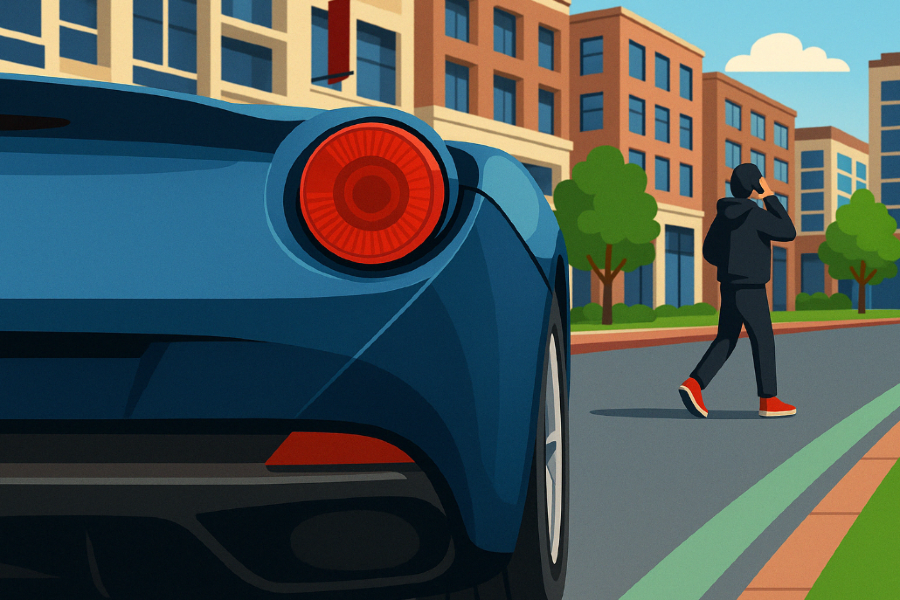
Stay Safe as a Pedestrian (Even With this Law)
While the Freedom to Walk Act gives pedestrians more freedom to cross, it’s important to remember that pedestrian accidents remain a serious problem in California. Over 1,000 pedestrians are killed in traffic accidents each year in the state, and thousands more are injured. The law doesn’t change physics – if a car hits a person, the person is likely to get hurt. So, staying safe is crucial. Seeking prompt medical care after an accident is essential to address injuries and ensure proper compensation.
Here are a few safety reminders for walking in California’s cities and neighborhoods:
Use Crosswalks When You Can
Crosswalks (marked or unmarked at intersections) are still the safest places to cross, because drivers expect to see pedestrians there. California law still requires drivers to yield to pedestrians in crosswalks. Using a marked crosswalk is particularly important as it emphasizes the legal and safety aspects, ensuring that both drivers and pedestrians understand their rights and responsibilities. Whenever possible, use a crosswalk or wait for the walk signal.
Make Eye Contact with Drivers
If you must cross mid-block, try to cross where you are visible and always look for oncoming traffic. Make eye contact with any approaching drivers so you know that they see you. Never assume a driver will stop.
Be Extra Cautious at Night or in Busy Areas
Los Angeles and other urban areas have heavy traffic and sometimes limited visibility. If you’re crossing a wide road at night or in a congested area, be patient and wait for a large gap in traffic. Pedestrian accidents in these conditions can lead to serious injury due to the lack of protective barriers. Wearing light-colored or reflective clothing can help drivers notice you.
Avoid Distractions
Just as we urge drivers not to text and drive, pedestrians should avoid texting and walking when crossing streets. Keep your head up and pay attention to your surroundings. Being alert can save your life. Failing to do so can result in accidents where pedestrians sustain injuries, ranging from head and neck injuries to upper extremity injuries, which often require extensive medical treatment.
Understand the Impact of Weather Conditions
Weather conditions such as rain or fog can significantly affect visibility and road conditions. Pedestrians should be extra cautious during adverse weather and ensure they are easily visible to drivers. Wearing bright or reflective clothing and using umbrellas or raincoats can enhance safety during such conditions.
The bottom line is that the Freedom to Walk Act empowers you to make safe crossing decisions on your own, but with that freedom comes the responsibility to do so carefully. Always use common sense and caution when crossing the street. No ticket is worth risking your safety, and no law can protect you from a driver who doesn’t see you in time. By staying vigilant, you can greatly reduce the chance of an accident.

Contact a California Pedestrian Accident Attorney for a Free Consultation
Despite all precautions, pedestrian accidents can and do happen. If you or a loved one has been injured in a pedestrian accident anywhere in California – whether you were in a crosswalk or jaywalking – it’s important to know your rights. The aftermath of a crash can be overwhelming, but you don’t have to navigate it alone.
Our team at RMD Law has extensive experience handling pedestrian injury cases. We understand the nuances of the new jaywalking rules and how to advocate for injured pedestrians. We offer a free initial consultation to help you understand your legal options and ensure you don’t miss important deadlines, such as statutes of limitations.
Speaking with an experienced California pedestrian accident attorney can help you determine liability, deal with insurance companies, and pursue the compensation you deserve for medical bills, lost wages, and pain and suffering. Don’t assume that jaywalking means you have no case – you may still recover damages even if you were partly at fault. Every situation is different, and a free consultation with a pedestrian accident lawyer at RMD Law can clarify your options.
Call us at (949) 828-0015 or contact us online for a free consultation. Our pedestrian accident lawyers will listen to your story, answer your questions, and explain how we can help. At RMD Law, we’re committed to protecting the rights of California pedestrians. Let us help you understand your legal options and fight for the compensation you need to get back on your feet.
- California’s New Jaywalking Law and Its Impact on Pedestrian Accident Claims - April 17, 2025
- A Visual Guide to the Most Common Types of Car Accidents - April 15, 2025
- Top 7 Mistakes To Avoid When Collecting Motorcycle Accident Evidence - April 10, 2025




